Chameleon Mode Review 2025: The Ultimate Antidetect Browser for Digital Marketers?

Ever tried running multiple ad accounts only to find yourself mysteriously banned within days? I've been there, staring at my screen in disbelief as Facebook's algorithm flagged my perfectly legitimate marketing campaigns as "suspicious activity".
Digital marketers face a growing challenge: platforms like Facebook, Google, and TikTok are becoming increasingly sophisticated at detecting multiple accounts run by the same person. This leads to frustrating account suspensions, lost revenue, and those awkward client conversations explaining why their campaigns are suddenly offline. What's worse, these platforms are now tracking your digital fingerprint across browsers, devices, and even networks, making traditional workarounds like incognito mode about as effective as a paper umbrella in a hurricane.
That's where antidetect browsers enter the picture, offering digital marketers a powerful solution to manage multiple accounts without triggering the algorithmic tripwires that lead to bans and suspensions.
After spending months testing antidetect browsers across various marketing campaigns (and suffering the consequences of those that have failed me), I’m ready to share my experience with one of the best: Chameleon Mode.
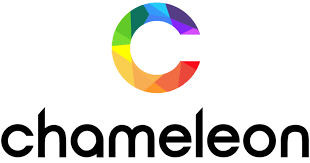
This Chameleon Mode review contains my unfiltered thoughts on how I’ve put it to the test and whether it lives up to the hype.
What is Chameleon Mode?
Chameleon Mode isn't just another browser – it's essentially a digital disguise kit that allows you to create unique, isolated browser environments for each of your online activities. Unlike standard browsers that leave consistent fingerprints across your sessions, Chameleon Mode alters key identifying elements like user-agent strings, canvas fingerprints, WebRTC information, and dozens of other parameters that websites use to track you.
At its core, Chameleon Mode lets you create and manage multiple browser profiles, each appearing as a completely different user to websites you visit. This means you can run numerous ad accounts, manage multiple clients, or conduct competitive research without revealing that the same person is behind these activities.
Chameleon Mode has been around since 2015, making it one of the original players in the antidetect space. While many competitors have attempted to replicate its functionality, Chameleon Mode has continued to evolve its technology to stay ahead of detection methods. It's specifically designed for professionals who need to maintain multiple online identities for legitimate business purposes – though like any powerful tool, it could potentially be misused (something we'll address later).
First Impressions
Unlike some competitors that require complex setup procedures, Chameleon Mode installed cleanly on my MacBook Pro in under two minutes. The download comes directly from their official website, which is important for security reasons – you definitely don't want to install an antidetect browser from an unverified source.
Upon launch, I was greeted with a refreshingly clean interface that manages to present powerful functionality without overwhelming complexity. The dashboard provides clear navigation to your browser profiles, proxy settings, and automation tools. Everything is logically arranged, making it accessible even for users who aren't particularly tech-savvy.
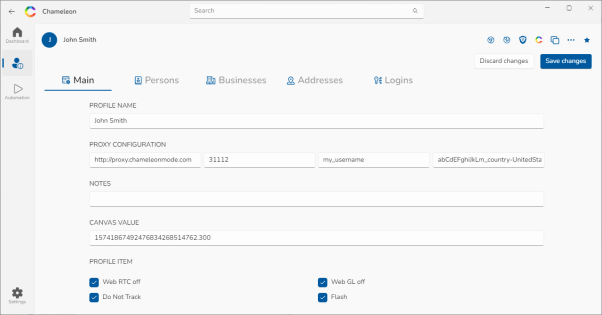
That said, there is a learning curve involved, particularly when it comes to understanding concepts like fingerprinting and how to configure proxy settings effectively. Chameleon Mode addresses this with comprehensive documentation and tutorial videos, but expect to spend an afternoon getting acquainted with the system before diving into serious work. This isn't a criticism – the complexity is necessary given the sophisticated nature of what the software is doing behind the scenes.
I particularly appreciated that Chameleon Mode doesn't overwhelm you with technical jargon in the user interface itself. The settings are explained in plain English, with helpful tooltips providing additional context when needed. This balance between power and accessibility is something many similar tools struggle to achieve.
Key Features Analysis
Browser Fingerprint Masking
This is where I’ve found Chameleon Mode excels in comparison with some competitors. The browser's fingerprint masking capabilities are impressively thorough, covering over 20 different parameters that websites use to identify users. In my testing, I ran the browser through multiple fingerprinting test sites like Pixelscan and Whoer, and it consistently showed different fingerprints for each profile I created.
What sets Chameleon Mode apart is that it doesn't just randomize these parameters; it creates coherent, realistic profiles. For example, if the browser is pretending to be a MacOS user with Safari, all the associated parameters will match this profile consistently. This attention to detail is crucial because modern tracking systems can easily spot inconsistencies in fingerprints.
I particularly appreciated the option to either save specific fingerprints (useful for maintaining consistent identities) or randomize them with each session (better for complete anonymity). This flexibility allows you to adapt your approach depending on your specific needs.
Proxy Management
Effective proxy integration is essential for any antidetect browser, and Chameleon Mode handles this expertly. The browser supports various proxy types including HTTP, HTTPS, and SOCKS5, and integrates with most major proxy providers.
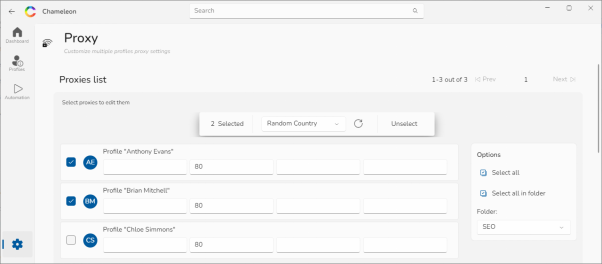
The Pro plan even includes 10GB of residential proxies per month, which is a significant value-add considering the cost of quality residential proxies. These are crucial for tasks that require appearing as though you're browsing from specific locations.
What I found particularly useful was the automatic time zone syncing feature. If you're using a proxy from, say, Germany, Chameleon Mode will automatically adjust the browser's time zone to match, eliminating another potential fingerprinting inconsistency that could give you away.
The proxy management interface is straightforward, allowing you to assign specific proxies to individual profiles or rotate through a list. You can also test proxies directly within the interface to ensure they're working properly before you start using them.
Virtual Browser Profiles
Chameleon Mode allows users to create and manage multiple browser profiles; up to 1,500 in the Pro plan. Each profile operates as a completely isolated environment with its own cookies, cache, and fingerprint.
Creating a new profile is straightforward: you select your desired operating system, browser type, screen resolution, and other parameters. You can also opt to have these randomly generated if you prefer. Once created, profiles are saved to your account and can be accessed from any device where you've installed Chameleon Mode.
The profile management system is especially helpful here. You can organize profiles into folders, tag them for easy filtering, and even add notes to remember what each profile is used for. This organizational structure becomes invaluable when you're managing dozens of accounts across multiple clients.
Session Sharing
One feature that sets Chameleon Mode apart from many other antidetect browsers is its one-click session sharing capability. This allows you to share access to a browser profile with team members or virtual assistants without revealing your account credentials.
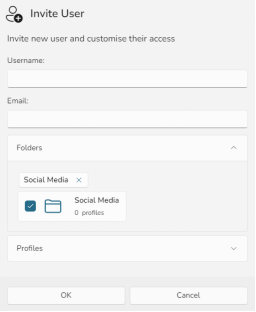
I tested this with my VA who helps manage social media accounts, and the process was seamless. I simply generated a sharing link, sent it to her, and she was able to access the specific browser environment I had set up. From the platform's perspective, it appeared as though we were the same person working from the same location, eliminating any red flags that might trigger security algorithms.
This feature is a game-changer for agencies and teams that collaborate on client accounts. It essentially allows your entire team to appear as a single user, regardless of where team members are physically located.
Automation Tools
Chameleon Mode includes several automation capabilities that can significantly streamline repetitive tasks. The browser supports Playwright, allowing you to create scripts that automate form filling, content posting, and other routine actions.
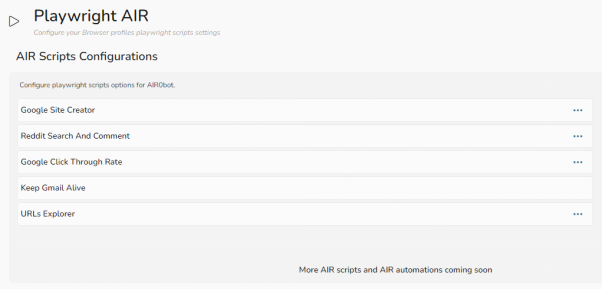
While not as robust as dedicated automation tools, these features are more than adequate for most marketing tasks. I created a simple script to automatically fill out contact forms on websites I was researching, saving hours of tedious work.
The automation tools do require some basic knowledge of JavaScript to use effectively, which might be a barrier for non-technical users. However, Chameleon Mode provides several pre-built templates and examples that can be modified for your specific needs.
Pricing Plans
Chameleon Mode offers three pricing tiers, which I'll break down to help you determine which might be right for your needs:
|
Plan |
Monthly Price |
Annual Price |
Key Features |
|
Basic |
$19/month |
$203/year |
50 profiles, basic automation, proxy integration |
|
Plus |
$69/month |
$621/year |
300 profiles, 3 virtual assistants, advanced features |
|
Pro |
$199/month |
$1,671/year |
1500 profiles, 15 virtual assistants, 10GB proxies |
All plans include the core fingerprinting technology, but the number of browser profiles you can create varies significantly. For solo marketers or those just getting started with managing multiple accounts, the Basic plan is likely sufficient. Mid-sized agencies will find the Plus plan offers the best balance of features and value, while larger operations with numerous clients will need the Pro plan's expanded capabilities.
Compared to competitors, Chameleon Mode's pricing is competitive but not the cheapest option available. Multilogin starts at €29/month (approximately $31), making it considerably more expensive. AdsPower offers a more budget-friendly option starting at $14/month, but with more limited features and less sophisticated fingerprinting technology.
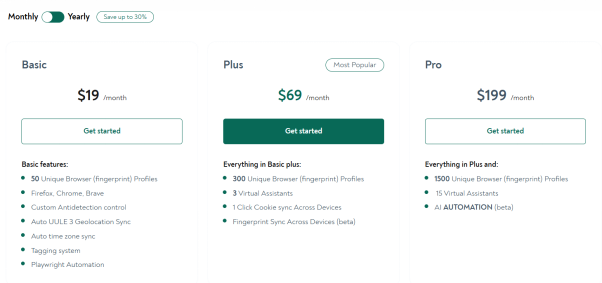
In my assessment, Chameleon Mode strikes a good balance between affordability and capability. The value increases substantially if you opt for annual billing, offering roughly a 25% discount compared to monthly payments. All plans come with a 30-day money-back guarantee, which allowed me to thoroughly test the service before committing.
Try Chameleon Mode now
Pros and Cons
After extensive testing, here's my balanced assessment of Chameleon Mode's strengths and limitations:
Pros
1.Superior fingerprinting technology: Chameleon Mode's fingerprinting protection is among the most sophisticated I've tested, covering more parameters than most competitors.
2.Intuitive interface: Despite its technical complexity, the browser is remarkably user-friendly, with logical organization and helpful guidance throughout.
3.Session sharing capabilities: The ability to share browser sessions with team members without compromising security is invaluable for collaborative work.
4.Proxy integration: Seamless proxy support with automatic time zone adjustment ensures consistent geographical presentation.
5.Lightweight operation: Unlike some competitors that consume excessive system resources, Chameleon Mode runs efficiently without significant performance impact.
Cons
1.No free plan: Unlike some competitors like AdsPower, Chameleon Mode doesn't offer a free tier for basic usage or testing.
2.Learning curve for automation: While the basic features are easy to use, getting the most out of the automation tools requires some technical knowledge.
3.Limited mobile support: The browser focuses primarily on desktop environments, with less robust options for mimicking mobile devices compared to some alternatives like Kameleo.
4.Cost for small operations: For individuals or very small teams, the pricing might be a barrier compared to more basic solutions.
5.Potential ethical and ToS concerns: While the tool itself is legitimate, users need to be aware that using multiple accounts may violate some platforms' terms of service.
Real-World Use Cases
To give you a clearer picture of how Chameleon Mode performs in everyday marketing scenarios, let me share some specific applications I've tested:
Digital Marketing Campaigns
I used Chameleon Mode to manage Facebook ad accounts for three different clients in the same industry. Normally, this would quickly trigger Facebook's algorithms, as they're designed to detect when one person is managing competing businesses. With separate browser profiles for each client, complete with different fingerprints and proxies, I was able to maintain all three accounts without issues for over two months.
The ability to maintain consistent identities for each account was crucial here—switching between accounts was as simple as selecting a different profile, with no need to log out and back in or worry about cookie contamination between accounts.
E-commerce Account Management
For an e-commerce client who sells on multiple platforms, I created separate profiles for their Amazon, eBay, and Etsy accounts. This separation prevented the platforms from linking these accounts together, which can sometimes lead to cross-platform suspensions if an issue arises on one platform.
This setup also allowed me to delegate management of specific platforms to different team members using the session sharing feature, without providing them access to all of the client's accounts.
SEO Research
Competitive SEO research often involves looking at the same competitors repeatedly, which can tip them off that they're being analyzed. Using Chameleon Mode with rotating proxies, I was able to conduct thorough competitor analysis without leaving consistent fingerprints that might alert them to the scrutiny.
This approach also allowed me to see geographically targeted content by appearing to browse from different locations, giving insight into how competitors were adjusting their messaging for different markets.
Comparison with Alternatives
Let's see how Chameleon Mode stacks up against its main competitors:
|
|
Chameleon Mode |
Multilogin |
AdsPower |
|
Best For |
Digital marketers managing multiple ad accounts |
Enterprise-level operations requiring advanced security |
Budget-conscious users needing basic multi-account management |
|
Standout Feature |
One-click session sharing with team members |
Enterprise-grade security and permission systems |
Affordable pricing with free tier available |
|
Rating |
4.7/5 |
4.5/5 |
4.2/5 |
|
Pricing |
Starts at $19/month |
Starts at €99/month |
Starts at $14/month |
|
Fingerprint Masking |
Advanced with coherent profiles |
Very advanced but complex to configure |
Good but less comprehensive |
|
User Interface |
Clean, intuitive |
Powerful but steeper learning curve |
Simple but less refined |
|
Automation |
Good with Playwright support |
Limited |
Good with extensions support |
Is Chameleon Mode Right for You?
Based on my experience, here's who would benefit most from Chameleon Mode:
Ideal for:
- Digital marketers managing multiple client accounts on the same platforms
- E-commerce sellers operating stores across different marketplaces
- Social media managers handling numerous brand accounts
- Affiliate marketers running multiple campaigns
- SEO professionals conducting competitor research
Less suitable for:
- Casual users concerned only with basic privacy (standard VPNs would be more cost-effective)
- Very small operations with just one or two accounts per platform
- Users needing extensive mobile device emulation (consider Kameleo instead)
- Teams requiring enterprise-level permission systems (Multilogin might be better)
When considering ROI, think about the cost of Chameleon Mode versus the potential losses from account suspensions. A single banned ad account can cost thousands in lost revenue and client relationship damage. From this perspective, Chameleon Mode is an insurance policy as much as it is a productivity tool.
For agency owners, the session sharing feature alone can justify the cost by simplifying team collaboration and reducing the security risks associated with sharing login credentials.
Using Swiftproxy to Optimize Chameleon Mode
Chameleon Mode has proven itself to be an indispensable tool for digital marketers. It excels in fingerprint masking, allowing you to create realistic, isolated profiles for each of your online identities. However, while Chameleon Mode provides a robust solution for browser fingerprinting and profile management, there are times when further optimization is needed, especially when it comes to controlling the geographical presentation of your activities.
That's where Swiftproxy comes in. By combining Swiftproxy's powerful proxy service with Chameleon Mode, you can enhance the already solid performance of Chameleon Mode with even more precise control over your IP addresses, geo-locations, and connection consistency. This combo ensures that your digital footprint remains as diverse and undetectable as possible, making your online activities nearly impossible to trace back to a single user or device.
Chameleon Mode Review: Final Thoughts
After thorough testing across numerous marketing scenarios, Chameleon Mode has become my go-to antidetect browser. It delivers on its core promise of providing reliable fingerprint protection while maintaining an intuitive user experience that doesn't require a technical background to master.
The browser's strengths clearly lie in its fingerprinting technology, profile management, and collaboration features. While not the cheapest option available, it provides excellent value for professional marketers who depend on maintaining multiple accounts without triggering security algorithms.
Looking ahead, Chameleon Mode appears well-positioned to adapt to evolving detection methods. The development team regularly updates the browser to counter new tracking techniques, which is essential in this constant cat-and-mouse game between platforms and privacy tools.
One final note on ethical usage: While Chameleon Mode itself is a legitimate tool for privacy and account management, users should always consider the terms of service for the platforms they're using. The tool doesn't absolve you from following platform rules about account creation and usage; it simply prevents you from being unfairly flagged when operating legitimate accounts.
If you're a digital marketer struggling with account suspensions despite following platform rules, or you need to manage numerous clients in the same niche, Chameleon Mode offers a robust solution that can eliminate many of the headaches associated with modern digital marketing. The 30-day money-back guarantee makes it relatively risk-free to determine if it meets your specific needs.
Get started with Chameleon Mode
FAQs
How does Chameleon Mode prevent account bans on platforms like Facebook?
Chameleon Mode prevents account bans by creating completely isolated browser environments with unique digital fingerprints for each profile you create. This means Facebook and similar platforms can't detect that the same person is managing multiple accounts.
How does Chameleon Mode compare to using a VPN for marketing purposes?
Chameleon Mode offers significantly more protection than a VPN for marketing purposes. While VPNs only mask your IP address, Chameleon Mode conceals your entire digital fingerprint, including browser configurations, hardware information, and behavior patterns. Modern tracking systems use these additional parameters to identify users even when they're using VPNs.
What types of businesses benefit most from using Chameleon Mode?
Digital marketing agencies, social media management companies, SEO agencies, and E-commerce businesses can all benefit from Chameleon Mode, particularly those managing multiple clients in similar niches. Essentially, any business that needs to maintain multiple legitimate online identities without triggering automated security systems will find Chameleon Mode valuable for daily operations.
Can Chameleon Mode help with geo-targeted marketing campaigns?
Chameleon Mode is excellent for geo-targeted marketing campaigns because it allows you to appear as though you're browsing from specific locations. By combining proxy servers with the browser's automatic time zone syncing, you can see exactly what users in different regions experience when viewing your campaigns.
Use code AFF30 for 30% OFF on any of Chameleon plans.

















































